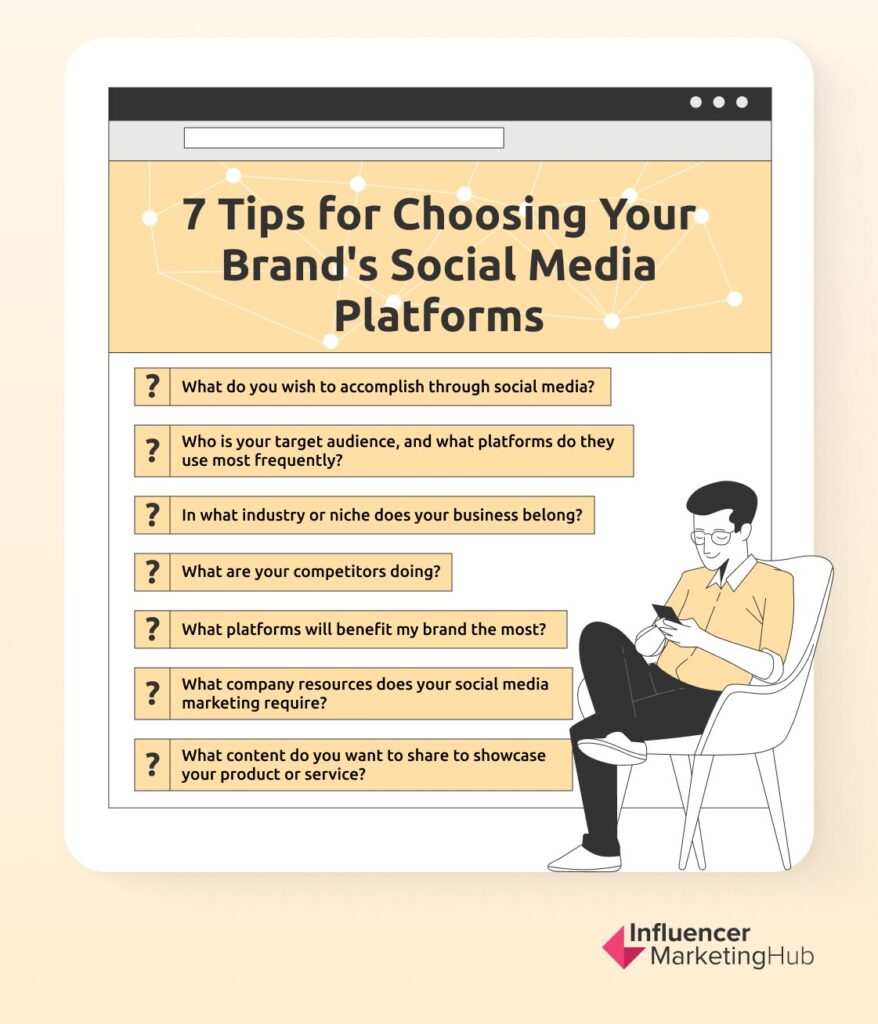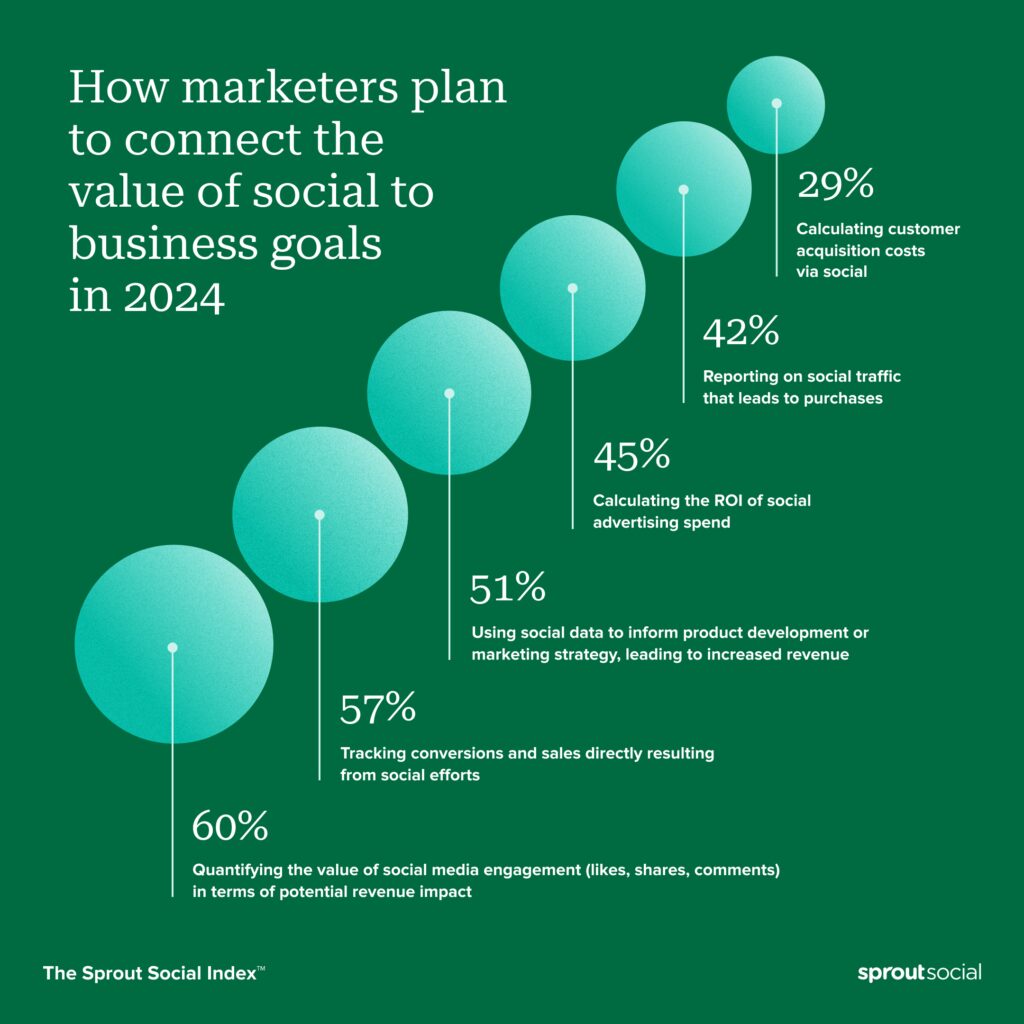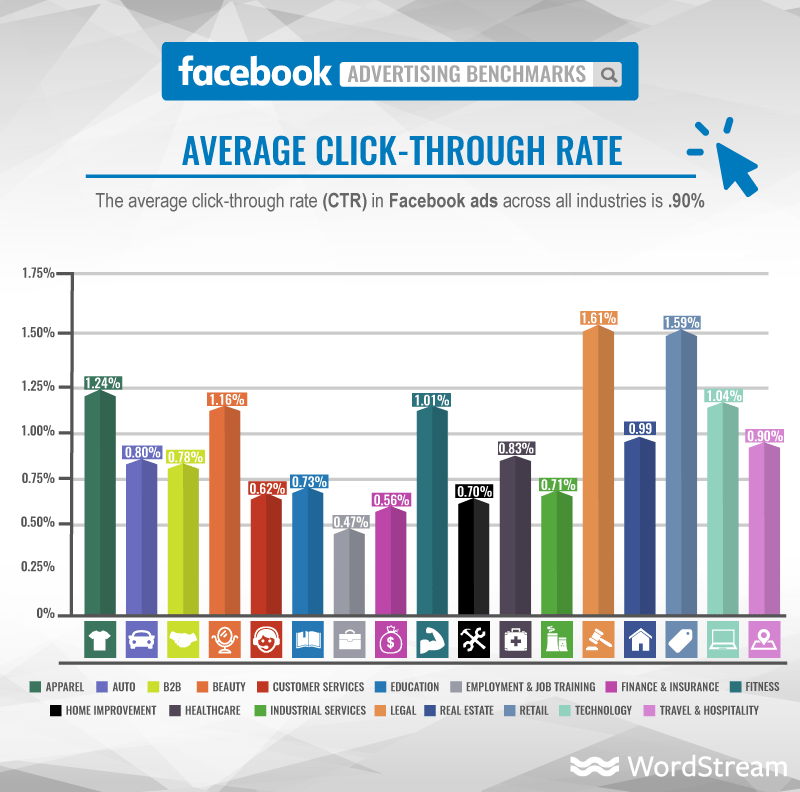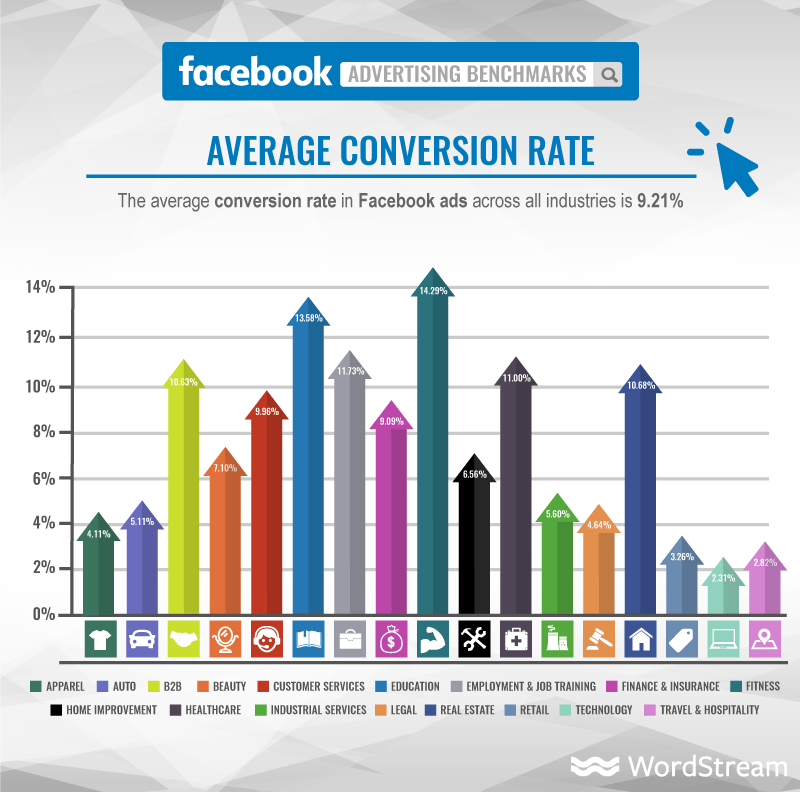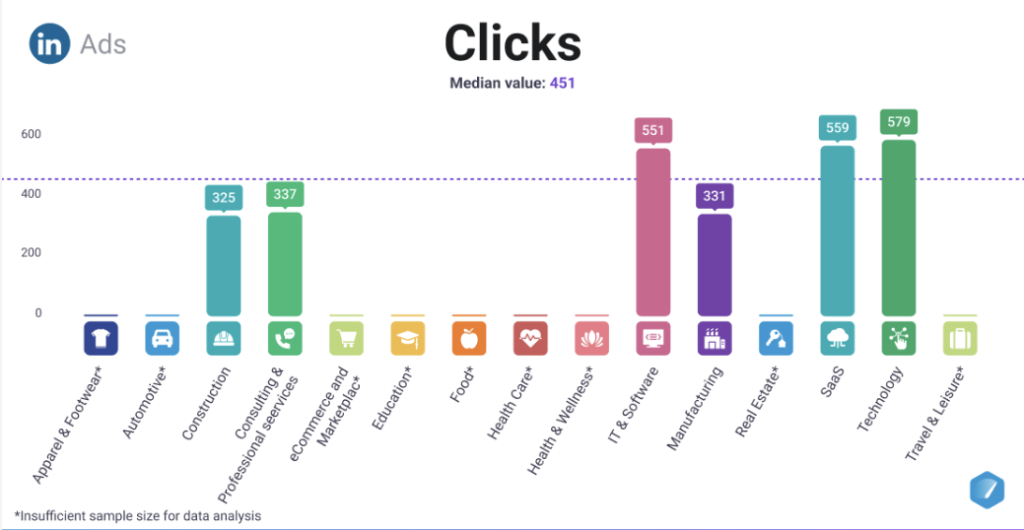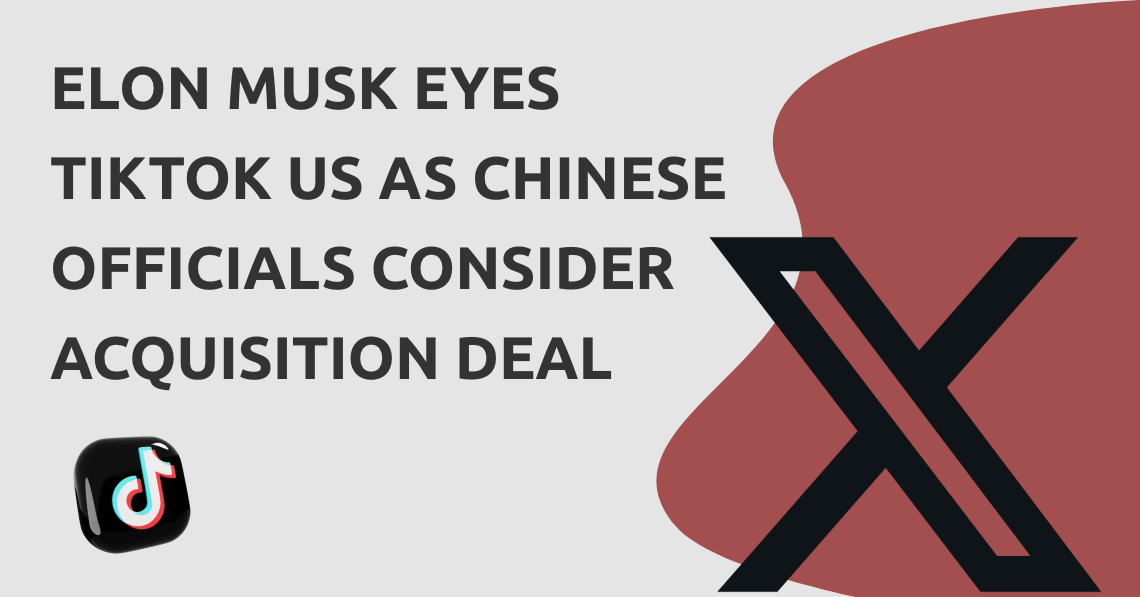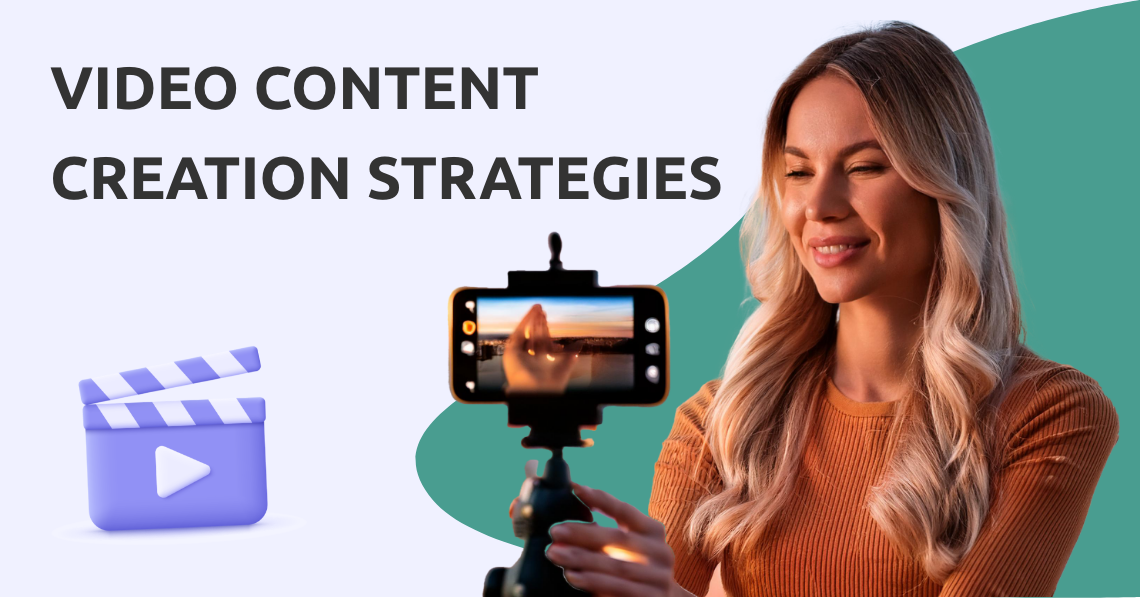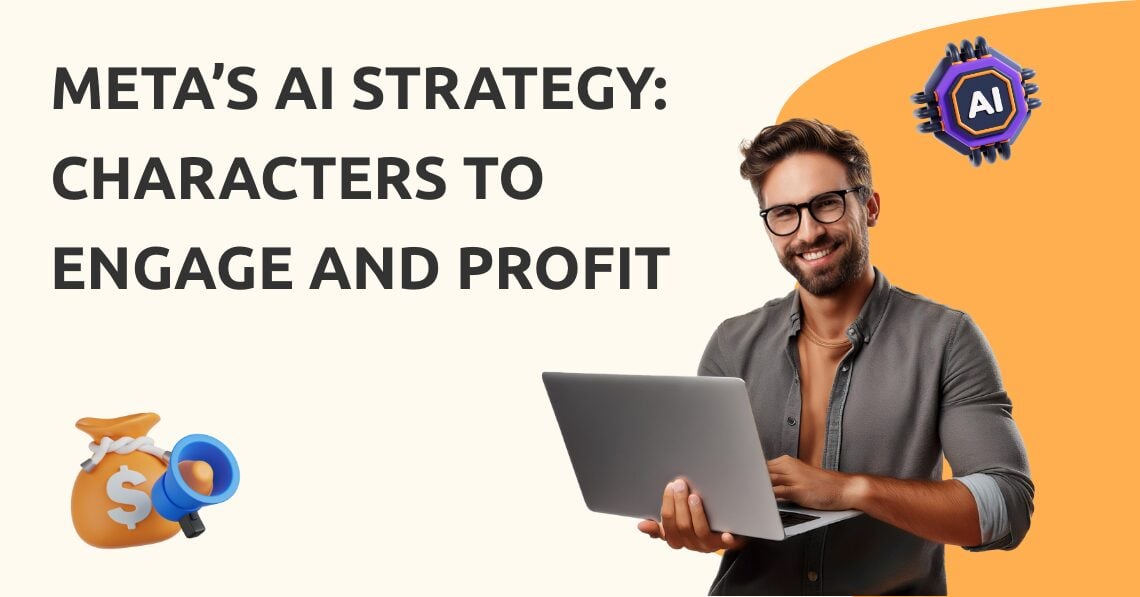With so many marketing channels to choose from than ever before, marketers face the challenge of identifying where their company can gain the highest returns. Since social media users visit 6.6 platforms monthly, you may be inclined to create an account on every popular channel so your brand won't be "missing out." Meanwhile, if you're broadening your social media presence, you might think about adding the newest popular platform to your strategy before fully understanding how to harness its full potential. Taking these haphazard steps can be unproductive and costly. But with careful planning and execution, you can achieve a successful multi-channel presence.
This article will take you through seven questions to ask yourself when choosing the right social media platform that will suit your company's needs.
- 1. What do you wish to accomplish through social media?
- 2. Who is your target audience, and what platforms do they use most frequently?
- 3. In what industry or niche does your business belong?
- 4. What are your competitors doing?
- 5. What platforms will benefit my brand the most?
- 6. What company resources does your social media marketing require?
- 7. What content do you want to share to showcase your product or service?
- Test Your Platform Choices and Measure the Results
- Case Studies: Orsini, Galaxy Theatres, LockNLube, Bakers Delight
- Let Your Social Channels Boost Your Brand Recognition
- Frequently Asked Questions
1. What do you wish to accomplish through social media?
Your business should focus its social media marketing where it matters most. For instance, reaching new audiences is one of the top goals of social media marketers in 2024. Other social media marketing objectives include increasing website traffic or visitors, leads, conversions, and sales or improving engagement, customer service, and online reputation. Also, 60% of marketers plan to translate social engagement (likes, shares, and comments) into monetary terms in 2024, specifically potential revenue.
Once you've set your goals, selecting the suitable platform for your brand becomes easier. You can choose the channel whose features can best deliver your desired performance metrics.
As discussed in our 20-step guide for crafting your social media marketing strategy, ensure your goals are SMART—specific, measurable, attainable, relevant, and time-bound.
Meanwhile, if you've been using one or more platforms but haven't achieved the results you've set for your business—or maybe growth has plateaued—auditing your current strategy to take stock of your channels' analytics can help reset your goals.
You can determine your most urgent goals by asking yourself:
- What's the purpose of our business, and how can we best pursue it?
- What matters the most to the business in the short and long term? Rank your priorities based on necessity and impact.
- What projects would contribute the most to fulfilling our business purpose and must receive resources? Which projects should we stop?
- What metrics should we use to measure how social media campaigns perform?
2. Who is your target audience, and what platforms do they use most frequently?
Market research, social media analytics, surveys, and competitor audience analysis allow you to find your target audience or who will be interested in your product or service. These methods can help you get answers to the following questions about your customers:
- What circumstance or problem made them consider buying a particular item or signing up for a specific service from our company?
- Where do they prefer to place orders, via online or offline stores?
- What causes customers to hesitate or delay transactions with our business, leading them to choose a competitor instead? What could persuade them to return to our business?
Studies and feedback also allow you to discover your audience's age range, gender, income level, and consumer culture. Their shared characteristics will be the basis of your buyer persona.
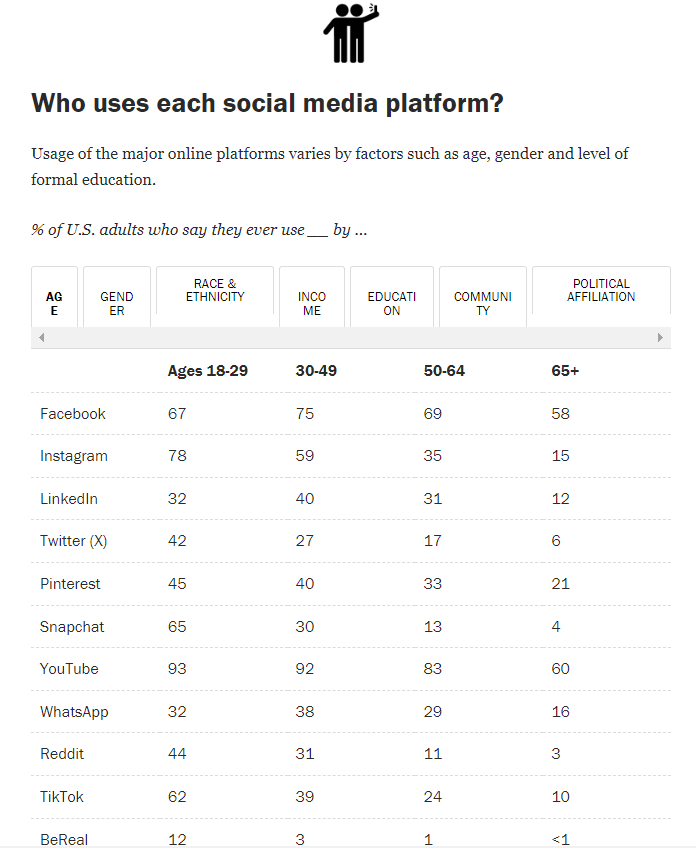
Age

Education
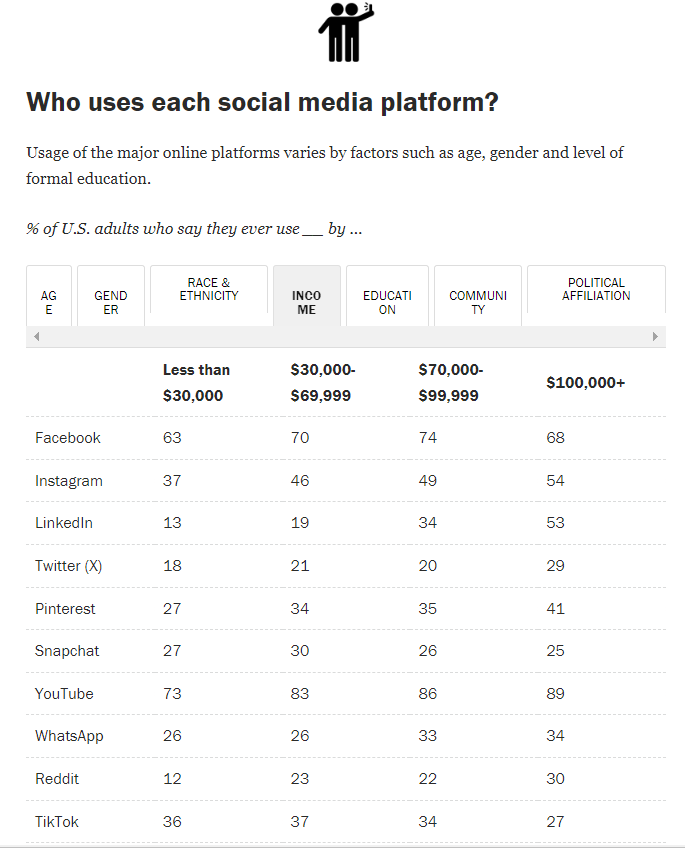
Income
Demographic information, data from social listening tools, and insights from direct online interactions with your customers can point you to the social channels where they spend most of their time.
3. In what industry or niche does your business belong?
Every industry’s audience tends to congregate on specific platforms, so you need to research your sector's presence, performance, and growth on various social networks. Market intelligence tools can help you accomplish this.
Facebook and Instagram are typically the most common platforms for B2C brands. Meanwhile, LinkedIn is the top channel of most B2B businesses for reaching professional clients. If your product or service isn't visual, you wouldn't typically want to assert your presence on Pinterest or Instagram. The opposite is true if you work in the creative space, fashion, interior design, and other similar fields.
You can look at metrics or industry benchmarks to understand how each social channel performs. Dash Hudson's 2024 Cross-Channel Social Media Benchmarks report shows follower/subscriber growth levels in each industry on three platforms: TikTok, YouTube, and Instagram. We’ve compiled the categories and percentages discussed in the report in the chart below for your quick viewing.
Platform | Average Growth Across Industries | Media and Publishing | Retail | Fashion And Luxury | Beauty | CPG, Food and Beverage | Home | Children and Baby |
YouTube | 3.9% | 1.8% | 0.6% | 2.2% | 2.2% | 1.7% | 1.9% | 1.9% |
TikTok | 5.5% | 16% | 8.9% | 9.8% | 8.7% | 16.9% | 19.8% | 21.2% |
2.8% | 0.8% | 0.4% | 0.6% | 0.6% | 0.6% | 0.5% | 0.9% |
Ready to Reach Your Ideal Audience?
Click here to connect with the right customers on TikTok and grow your brand’s impact.
Meanwhile, Wordstream compiled performance data of Facebook ads per industry. Examine these stats when choosing the best social media to advertise your business.
Databox also reported the CTR and engagement levels of organic and paid LinkedIn posts by industry in 2023.
4. What are your competitors doing?
Conducting a competitor analysis widens your perspective of:
- Competitors: their social media profiles and their share of voice compared to yours
- Competitor content: type, format, posting schedule or frequency, and other engagement tactics, including influencer partnerships
- Follower profile: demographics and the kind of response competitors get from them
Why should a marketer consider their competitors when choosing a social media platform? The findings and insights you discover from your study help you:
- Identify trends and opportunities you can incorporate in your social media strategy for product/service differentiation.
- Avoid risks by observing the tactics that don't seem to work for your competitors, including those beyond social campaigns such as customer service management.
- Learn or foresee your rivals' next moves through announcements of upcoming products or events, customer complaints, and news of company crises.
In addition to social media listening tools and search engines, business directories, industry reports or publications, and trade shows or industry conferences can also help you learn from your competitors.
5. What platforms will benefit my brand the most?
After analyzing your target audience, industry preferences, and your competitors' activities, review the features of each platform to start planning your social media strategy. MetrixLab’s table of social media functions and limitations can aid you in this process.
Also, evaluate—or reassess, if you're revamping your current social media strategy—your chosen platforms for:
- Content requirements: While standard formats rarely change, staying on top of trends will ensure your brand stays culture-current.
- User engagement: The content of some platforms can lean toward passive consumption while others are more interactive.
- Advertising options: Check the channel's paid ad targeting options and pricing.
- Analytics: Find out what built-in analytics and insights the platform offers as they can help with your campaign performance tracking.
6. What company resources does your social media marketing require?
You need the following resources to sustain your social marketing efforts:
- Time for each channel, including the learning curve for mastering every platform
- Individuals who will plan and create content for social media posts, manage their publication on each channel, and oversee performance tracking
- Software for scheduling and analyzing the impact of social media campaigns
- Budget for the staff or chosen social media marketing partner, software, and ad placement
7. What content do you want to share to showcase your product or service?
Ensure that you have the right content type for your chosen social platforms and a sufficient amount of it because curation and creation take time.
While cross-posting is possible in some instances, consider that each platform has a format that it can showcase in the best possible way (such as text for Twitter and LinkedIn, videos for YouTube and TikTok, and still images for Instagram and Pinterest). Multi-channel posting tools can help you optimize content for each unique audience.
Test Your Platform Choices and Measure the Results
After selecting your platform or platform mix, create account profiles and publish appropriate content to test how your audience responds. Make your social username as consistent as possible across all networks to strengthen your brand identity. Then, start tracking and analyzing the performance of your posts: reach, impressions, engagement (likes, shares, and comments), and other key performance indicators.
Although social media channels have analytics tools, you can also subscribe to third-party platforms to gain deeper insights about what appeals to your followers. Identify areas for improvement so you can adjust your campaign accordingly. Meanwhile, if you want social media to help you monitor and manage your online reputation, sentiment analysis can help you gauge the public's perception of your brand. You can also hire social media agencies, who are experts at producing, running, and tracking fit-for-platform and fit-for-audience social campaigns.
Case Studies: Orsini, Galaxy Theatres, LockNLube, Bakers Delight
See how four companies partnered with digital marketing agencies to develop successful campaigns.
Orsini
With the help of Prism Global Marketing Solutions, Orsini—an Illinois-based pharmacy specializing in rare diseases and gene therapies—was able to reach out to B2B audiences on Twitter and LinkedIn. Before working with Prism, Orsini had only directed its social posts on Facebook toward prospective and current patients. Their new targets now included prospective manufacturing partners and healthcare providers, so they published four to five thought leadership pieces per week on LinkedIn and Twitter.
The year-long campaign led to a 42% revenue increase. Orsini’s website traffic rose 34%, while social media clicks soared by 1,293%. It also achieved a 42% growth in sales-qualified leads. Moreover, Prism included ads to amplify blogs on LinkedIn, boosting conversions by 28%.
Galaxy Theatres
Galaxy Theatres, with 15 locations across the Western US, initially used only Facebook for customer interaction. BrightAge, their marketing agency, enhanced their strategy by creating unique Instagram accounts for each theater. This step allowed Galaxy Theatres to provide content tailored to individual locations.
By posting new film announcements at least twice daily, they saw an impressive increase in social followers by over 200% and a 72% boost in online ticket sales. Furthermore, by actively tracking and responding to customer queries and comments across Instagram, Facebook, and Yelp, engagement rates soared by more than 390%.
LockNLube
American greasing products manufacturer LockNLube tapped Single Grain to expand its online presence beyond Amazon and eBay. As part of the marketing strategy, Single Grain not only optimized LockNLube’s product pages and ads on eCommerce platforms but also incorporated social ads and social shopping.
By repurposing existing creative assets for TikTok and YouTube and enabling direct sales through Facebook and Instagram Shopping, the company enhanced its digital footprint. These strategies, which included featuring “frequently bought together” items, led to a 68% increase in LockNLube’s paid traffic and an 18% increase in customer return rate over two and a half years.
Looking to Grow Your Digital Reach?
Expand your brand’s presence with TikTok and social shopping. Start here.
Bakers Delight
Emote used a multi-faceted approach to help Aussie bread brand Bakers Delight find potential franchise partners from middle to high-income earners in Australia and New Zealand. The agency produced ad assets based on demographics and the stages of the franchisee journey.
Emote placed ads on LinkedIn for potential and current business owners. They also created conversion-focused ads on Instagram, Facebook, and YouTube for customers who already showed interest in purchasing a franchise. The social media campaign was further augmented with Google and Taboola ads.
After a year, Bakers Delight experienced a 29% increase in franchise inquiries, a 45% conversion growth from social media, a 170% increase in Google Ads conversion, and a 36% rise in website traffic.
Let Your Social Channels Boost Your Brand Recognition
Performing well on one or two social networks is better than running a handful of channels with poor engagement. Making waves on one or several platforms can be more than you can handle.
When that happens, social media agencies can provide support so that your customers continue to receive value at every social touchpoint. At the same time, they can assist you in strategically selecting where to invest your time and resources to achieve optimum results.
Frequently Asked Questions
How many months will it take to see the results of a social media strategy?
The benefits of social media campaigns can be observed within a few weeks. However, sustainable engagement and follower growth typically require at least three to nine months to build.
How can I present the ROI of my social media marketing efforts?
Use the formula: (revenue - expenses) / expenses x 100 = _%
Expenses can include salaries, freelancer fees, platform subscription fees, and the cost of social ads.
Example: $150,000 - $80,000 / $80,000 x 100 = 87.5%
It is recommended to compare your sales data before and after executing a marketing campaign for a clear view of its effectiveness.
What are the social media marketing risks that I should be aware of?
Despite the many advantages of running social media campaigns, some unavoidable risks include:
- Posting of complaints, which can hurt your company's reputation
- Spread of fake news or misleading information
- Unauthorized company personnel "speaking on behalf" of your business
- Privacy concerns over data collected for future advertising and promotions
- Cyberhacking, which can lead to the deletion of the account owner’s posts or malicious posts
